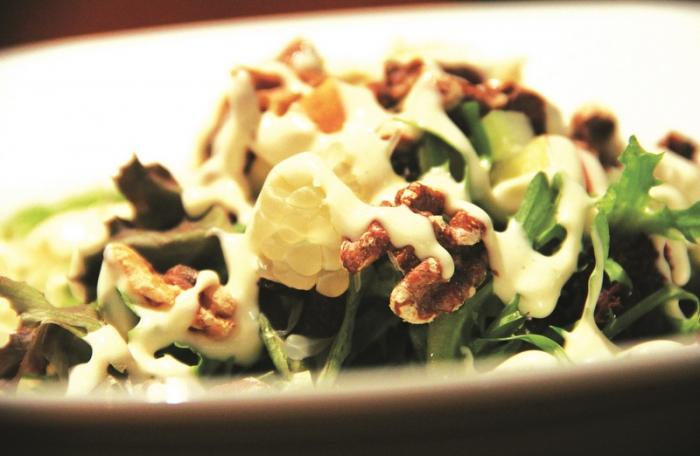Excuse Buster: Choose salad dressings with care

PHUKET: First rule of nutrition, as well as weight loss, is to choose real food that is minimally processed. Often real foods (except those naturally preserved) have a short shelf life.
In the past, I have spoken of the potential health dangers of transfats, vegetable oils, MSG, sugar – especially high fructose corn syrup – additives, colorings, preservatives and so on. Well, unfortunately these could even be lurking in your nutritious salad, if you choose the wrong dressing.
As I say to my clients, if it comes in a package then you have to read the label to see if you’re getting more than you bargained for. Additionally, if you don’t know the ingredients, it’s a good idea to put it back on the shelf.
Look at the ingredients to this very popular creamy Italian salad dressing: Water, soybean oil, vinegar, sugar, salt, contains less than 2 per cent garlic, xanthan gum, citric acid, propylene glycol alginate, onions, polysorbate 60, spice, red bell peppers, garlic, phosphoric acid, parsley, vitamin E and natural flavor.
There will be ‘experts’ out there saying there is nothing wrong with these ingredients. As I wrote in my last column, you can just about find a positive study on nearly every food out there – including the first ingredient after water: soy bean oil.
I previously wrote about my concerns with soy as a hormonal disruptor, but the oil is not only oxidized through the processing (creating free radicals), it also is full of Omega 6 oils that could lead to a range of inflammatory issues.
The fourth ingredient is our old foe, sugar. That too in a highly processed form. Much of the sugar today comes from high fructose corn syrup, but watch out. They keep changing (‘updating’) its labeling name.
So why ruin something so healthy with a harmful dressing, when you can easily make your own? The first ingredient has been well studied. It tastes amazing, is minimally processed and is the key to most dressings – extra virgin olive oil.
Here are three very simple dressings that I make at home. I am not a chef so feel free to get creative. Put all the ingredients in a jar and shake vigorously for 30 seconds.
LEMON ZEST
4 tablespoons of extra virgin olive oil.
4 tablespoons of apple cider vinegar.
4 tablespoons lemon juice.
A pinch of natural sea salt.
A pinch of black pepper.
A dash of lime and fresh mint vinaigrette.
Here’s another twist on this.
4 tablespoons of extra virgin olive oil.
1 teaspoon of grated or minced lime zest.
2 tablespoons of fresh lime juice.
2 tablespoons of chopped fresh mint.
Sprinkling of water.
GARLIC AND MUSTARD
4 tablespoons of extra virgin olive oil.
2 teaspoons of Dijon mustard.
3 tablespoons balsamic vinegar.
2 cloves of garlic, minced.
1-2 teaspoons sea salt.
A pinch of freshly ground black pepper.
RED WINE VINEGAR
4 tablespoons of extra virgin olive oil.
2 teaspoons of Dijon mustard.
4 tablespoons red wine vinegar.
1 tablespoon of flaxseed oil.
2 shallots, finely diced.
1-2 teaspoons of sea salt.
A pinch of black pepper.
So, don’t hold back on the salads. It’s no secret that fresh raw vegetables offer a bounty of goodness. Just steer clear of the nutrient poor ‘fake foods’ trying to rob your body of health. Keep it simple, keep it real.
Craig Burton is a Certified Sports Nutritionist (CISSN) with a Bachelor of Science degree (Sports Science) and a National Academy of Sports Medicine (PES) certification.
— Craig Burton
Latest Thailand News
Follow The Thaiger on Google News:


























